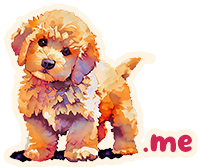A puppy’s natural instinct to explore can place it in dangerous situations. Some accidents are unavoidable; however careful supervision can go a long way. If an emergency occurs, a family should seek vet attention first and then inform the leader of the situation.
Ingestion of Foreign Bodies
Foreign objects that are swallowed (such as toys, socks or rocks) can cause obstructions in the stomach or intestines that must be surgically removed. If your puppy has a habit or tendency to pick up, chew or swallow other than its food or approved toys, then you take action to train your puppy.
The most important commands a ‘mouthy’ puppy should know is:
- Recall Command (When a dog reliably comes to the owner when called despite distractions.)
- Out Command (When a dog drops anything that is in it’s mouth when the command is given.)
- NOTE: Keen supervision and safe confinement of a puppy for the first 12 months is the BEST prevention of consumption of foreign objects. The first 12 months of a puppy’s life is a very impressionable time. Supervising the puppy and NOT allowing the puppy to develop a habit of picking up inappropriate objects in their mouth is the MOST EFFECTIVE SOLUTION. Always have your puppy in a pen or crate when you are not supervising them. If they develop the habit of chewing inappropriate items in the crate or pen (such as bed, bowls, toys, etc)- remove the items and replace with appropriate extra strong chews or food containing toys when unsupervised. Have a short intense playtime session before confinement to help them release energy and settle. When your puppy is being supervised by you, interrupt all inappropriate chewing/mouthing behaviors with the use of their name, or ‘come’. Exchange the inappropriate item for an appropriate item (toy , chew, or treat).
- Leave It Command (When a dog reliably leaves an object alone when told leave it.)
Poisoning
There are many things that are poisonous to dogs. Poisons can cause injury to internal organs that may result in serious illness, or even death. In the case of a possible poisoning, families should consult a veterinarian immediately. Different poisons require specific treatments, and many times the speed of the response will make a huge difference in outcome. After the puppy is stabilized, the veterinarian should contact a GDB veterinarian to determine what further treatment should be provided. It is vital that a home be proofed to ensure that a puppy does not get into anything that will harm it.
Common substances that can be poisonous to dogs if ingested:
● Antifreeze
● Chocolate
● Fertilizers
● Grapes
● Medications
● Peach pits
● Potato “eyes”
● Raisins
● Raw fish
● Raw onions
● Tomato plants
● Xylitol
● Houseplants – this list contains only the most common types of poisonous plants. If the puppy eats
any type of plant, raiser should call veterinarian.
o Japanese Yew
o Mistletoe
o Oleander bushes
o Philodendrons
o Poinsettias
o Sago Palm
Here are some excellent additional references regarding poisons:
● ASPCA Poison Control
● Pet Poison Helpline
Drowning
Puppies should never be left unattended in an area with access to a swimming pool or near any open body of water. The puppy should be controlled with a long-line or leash when around dangerous settings. Pools, ponds etc. on the raisers’ property must be fenced to keep the puppy out of the area when not directly supervised.
Interactions with Other Pets and Livestock
Puppies should not be allowed to pester other dogs and cats in the home. Introductions should be slow and
positive with the animals separated by barriers at first. Rough-housing with other pets could lead to injury and
is to be discouraged. See the document “Dog to Dog Interaction” for more information. The puppy should be
kept at a good distance from livestock and rewarded for staying calm. Over time, the pup may be allowed
closer but should always be on leash around other animals. Horses and other livestock may inadvertently
step on a puppy causing injury. Puppies may become over-stimulated by poultry and small animals, triggering
prey drive. All exposures should be done carefully with food rewards to keep the puppy calm and under
control.
Tips for Keeping a Pup Safe
● Puppies should be wearing their identification collar at all times.
● The puppy should always be on leash when in an unenclosed area, even in remote or rural areas. A long line or retractable leash should be used to exercise the puppy in unfenced or unsecured areas.
● Dog parks are counter-productive and dangerous and should be avoided.
● A leash should always be used when taking the puppy to the run, car or in any unfenced area.
● Gates and doors to outside exits should always be checked before letting the pup out.
● A chain with a snap bolt should be used to secure kennel gates and fence gates whenever possible. This extra step ensures that the enclosure is secure.
● Whenever possible, gates which are not regularly used and could lead to escape should be padlocked. Young children or visitors might not be as aware of the rules and may inadvertently let the puppy escape.
● Good latches which close securely should be provided and checked regularly.
● Extra precautions should be taken when friends, relatives and workers are visiting. The puppy should be kept on leash, crated or in kennel run if there is a lot of activity and the pup cannot be supervised.
● The pup should be trained to wait at doors, gates, and when exiting vehicles.
● Regular and frequent inspections of fence perimeters and runs should be undertaken. Holes or weak areas should be checked for and repaired immediately.
